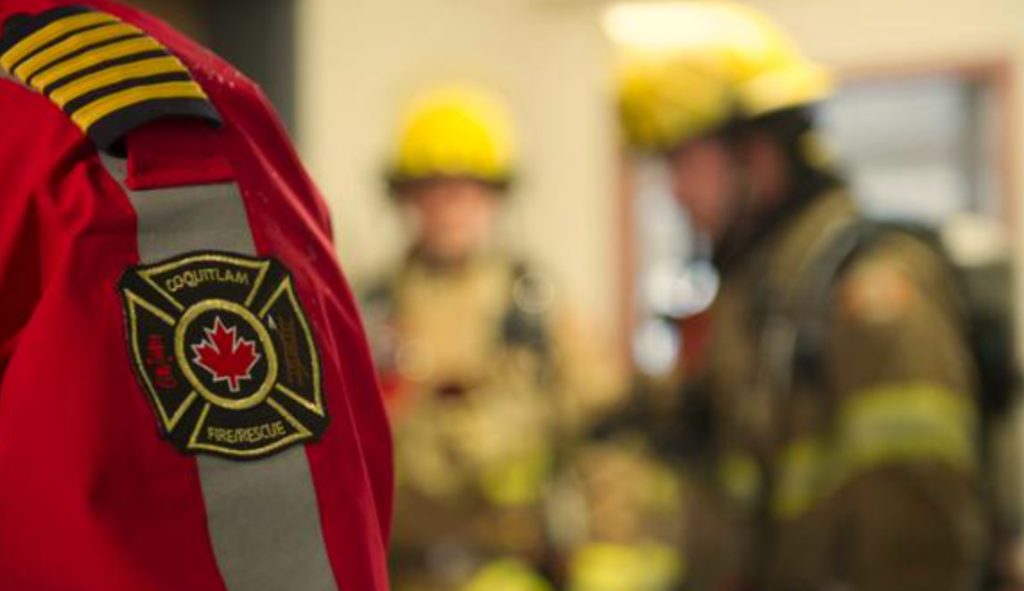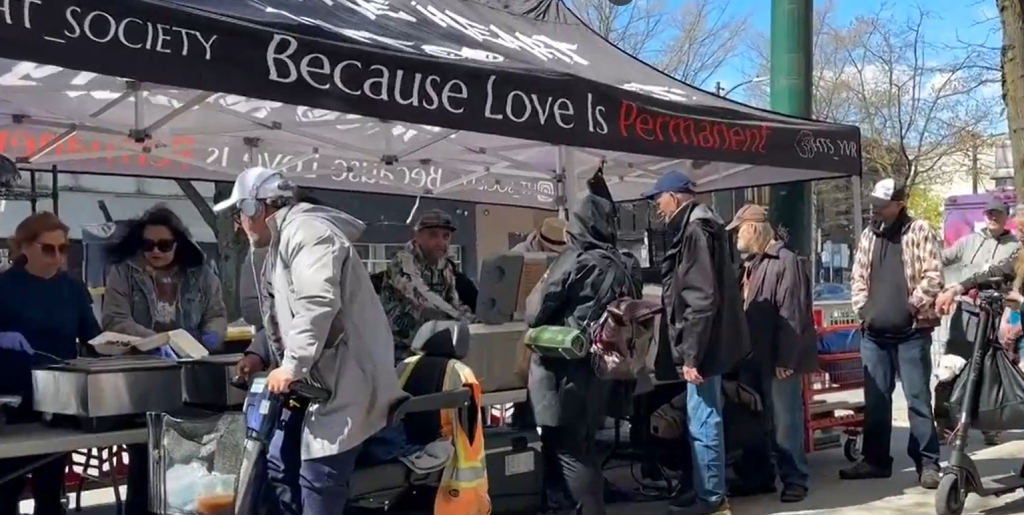Program allows incarcerated women to raise their children inside Canadian prisons
Posted May 24, 2023 7:53 am.
Last Updated May 24, 2023 8:06 am.
It may look like a typical university dorm room with a shared kitchen space and an entire hallway filled with private bedrooms but it’s actually the minimum-security unit at the Grand Valley Institute for Women, one of a handful of prisons for women in Canada.
However, the prison, which is located in Kitchener, ON, is not only intended to house inmates, but the children of incarcerated women as well.
The mother-child program was implemented in 2001 and allows eligible inmates to raise their infants and toddlers inside the prison as long as they can afford the costs of feeding and caring for their children.
“These moms and children are living in the minimum unit,” explains Patrice Butts, the Mother-Child program coordinator at Grand Valley. “It looks like a really lovely dorm, and mom has an adjoining nursery with her baby. She walks outside. It’s not the image of what perhaps people are conjuring up.”
Across Canada, over 150 women have participated since the program launched, including Danielle Ouellette who was incarcerated at the Edmonton Institution For Women.
“So, in 2020, I was really hard into my addiction and I ended up making a series of bad decisions that ultimately led to me just honestly not caring,” said Ouellette in an interview inside the minimum-security unit.
Ouellette was sentenced to two years for attempted armed robbery. At the time of the interview, she had been raising her four-year-old-son Charlie in the prison for six months.
While she understands some people may not believe a jail is the best environment for a child, Ouellette said it’s “a thousand times better than being in foster care.”
“There are sometimes where it was not really the best environment for him to be in and I got that. But, given the alternatives, [it] was a no brainer for me to bring him here,” said Ouellette.
“He got spoiled rotten by everybody in the building and so much attention. I don’t know how many times I saw him get an inmate or guard to do something absolutely ridiculous; like crawl on the floor and give him a horseback ride.”
Butts acknowledges that there are challenges in overcoming the perception that prison isn’t the best place for children, but stresses that being with their mother, who has undergone extensive security and psychological screening is ultimately in the child’s best interests.
“Obviously, we would like this not to be a part of life, but it is a part of life,” she explained. “We look at some of the other factors where risk can be managed in a really healthy way, where vulnerable mothers and families can be supported in a really positive way and get a great start.”
“I’ve definitely made mistakes. But who hasn’t? I know that I messed up. And I’ve been working so hard to change my life around since I’ve been here and since I committed my crime. I’ve tried so hard to be the best mom I can,” explained Ouellette. “I am trying really hard to be a lot better, the mom that I know that Charlie deserves.”
“They made a mistake in their lives. They’re dealing with it. But they don’t stop being mothers and they don’t stop caring and being impacted every day about what’s happening with their children and how important their children are to them,” added Butts.
“The child is central to this. It’s always about, ‘Is this in the child’s best interests?’ And so developmental needs are addressed both within the institution and in the community,” Butts explained.
In Charlie’s case, that meant he wasn’t solely surrounded by inmates and prison staff, but also got to participate in a parent-child playground in the community twice a week, exposing Charlie to other children in his age group.
That exposure came in handy. A COVID-19 outbreak forced Charlie to leave the prison just weeks before his mom’s release. In the meantime, he stayed with Ouellette’s friend Amber and her young children in Calgary; where he went from being the only child in the prison block to learning how to be part of a more traditional household.
But Danielle said his time in prison and with the mother-child groups prepared him for a family environment.
“I did everything I could to make it as much like home as I possibly could for him. We had our pictures in the pod, like on the fridge. And I had so many toys and stuff for him. I just tried really hard to make it feel like home,” said Ouellette. “And I think I did a good job at that. I don’t regret bringing him here at all.”
Melissa Bailey also said she did the best thing for her son Rhyder by raising him at Grand Valley.
“Going to prison saved my life. Had I not got arrested, I might not even be here. Had I not got arrested, Rhyder probably wouldn’t be with me. I owe a lot to that place,” said Bailey.
Bailey was pregnant when she was arrested and learned of the Mother-Child Program at the Kitchener jail.
“I was like, okay, I’m doing this. I’m going to plead guilty and I need to make sure I get into prison so I can have him with me,” explained Bailey, who pleaded guilty to her charges and others so she could get a long enough sentence to get out of the provincial system and into the federal correctional system.
Only one provincial mother-child program exists and its in British Columbia.
Bailey was sentenced to two years for drug trafficking. “When Melissa got to GVI, she was very pregnant,” said Butts. “She gave me a big hug and sat down and before I asked her or said anything to her, she just looked me in the eye and said, ‘I just want you to know that whatever I have to do, I’m doing it’.”
Qualifying for the residential program isn’t easy.
Inmates have to agree to have local children’s services involved. They can’t have a criminal history of extreme violence or crimes involving children. Inmates also need to complete several assessments and have to qualify for minimum or medium security clearances.
They also have to find a trusted caregiver from within the prison population who meets those same credentials.
The program has been criticized by experts for creating barriers for Indigenous women to take part in the residential component.
The requirement that children’s protective agencies be part of the childcare plan has come under fire as Indigenous women are less likely to accept their involvement, given that more than 50 per cent of all children in foster care under the age of 14 are Indigenous, according to the Canadian government.
Bailey, who is not Indigenous, did not qualify in time to take her son back to the prison after giving birth in a hospital under the watch of guards. She had to hand her newborn son to a stranger.
“It was the hardest thing I ever did in my life,” said Bailey. “I told him that I loved him very much. And to come back to me.”
And once Bailey passed the program, he did. “She was very determined. She was very focused,” says Butts.
“I had so much help … Rhyder was the light of the minimum unit. He was the only baby there at the time. So. I wasn’t doing it by myself,” explained Bailey.
“The women who were helping Melissa were also serving time,” explained Butts.
“They would care for him; they would feed him. They would play with him. They would certainly help her by cooking meals for her because she was so busy with the baby, supporting her, doing her laundry for her and also offering to rock and walk Rhyder for her to have a nap.”
When questioned about whether being surrounded by criminals during some formative years was good for Charlie, Ouellette said she does worry about that.
“He, at times, would ask people here, like, ‘Were you a criminal? Why are you in jail?’ And I tried to sugar-coat stuff as much as I could, but also be honest with him. And I was honest with him to a point [that was] age appropriate about what I did and why I ended up here and how it’s not fun, it’s not cool and it’s not something that I ever want to see him do,” shared Ouellette. “I never want to see him get in trouble with the law or think that it’s normal to be in jail or be in that kind of crime lifestyle.”
There are very few studies on the long-term effectiveness of the program, but both Bailey and Ouellette have since been released from prison and are trying to be the best citizens and moms they can be.
“I’m going to put everything I have into it, everything I have into staying sober, everything I have into raising Charlie in a good environment and making sure he has a good life, a good education,” said Ouellette.
“I’m not a millionaire. I don’t own a home or a business, but the work that I’ve made on myself. Making my mom proud and my boys proud that’s the biggest success I’ll ever have,” added Bailey.
Most incarcerated moms don’t qualify for the program. In a new documentary, more details on how some prisons work to keep the bond between mother and child alive through barbed wire and concrete walls.
Watch “VeraCity: Prison Moms” on Sunday, May 28 at 10 p.m./9 p.m. CT only on Citytv.










